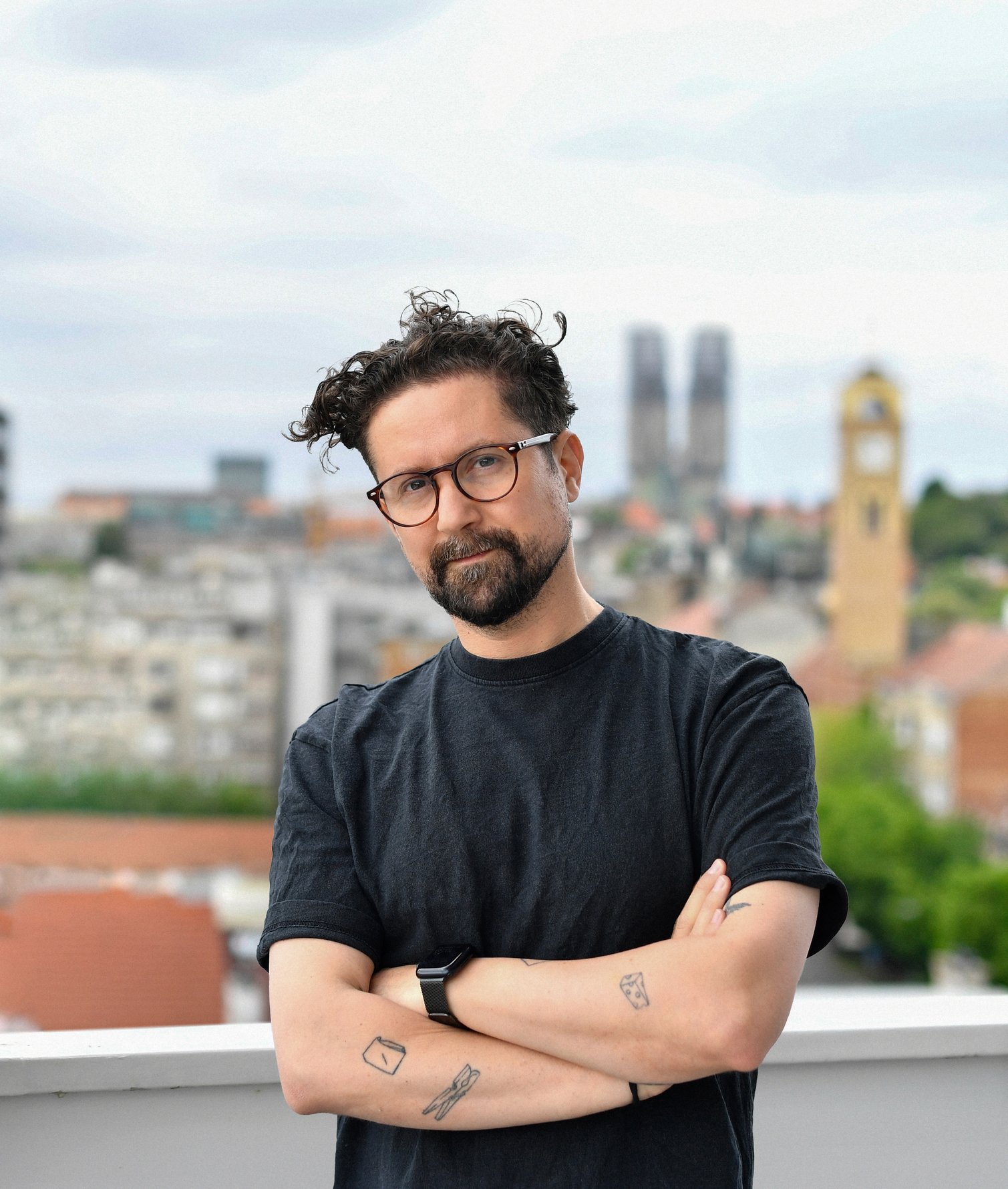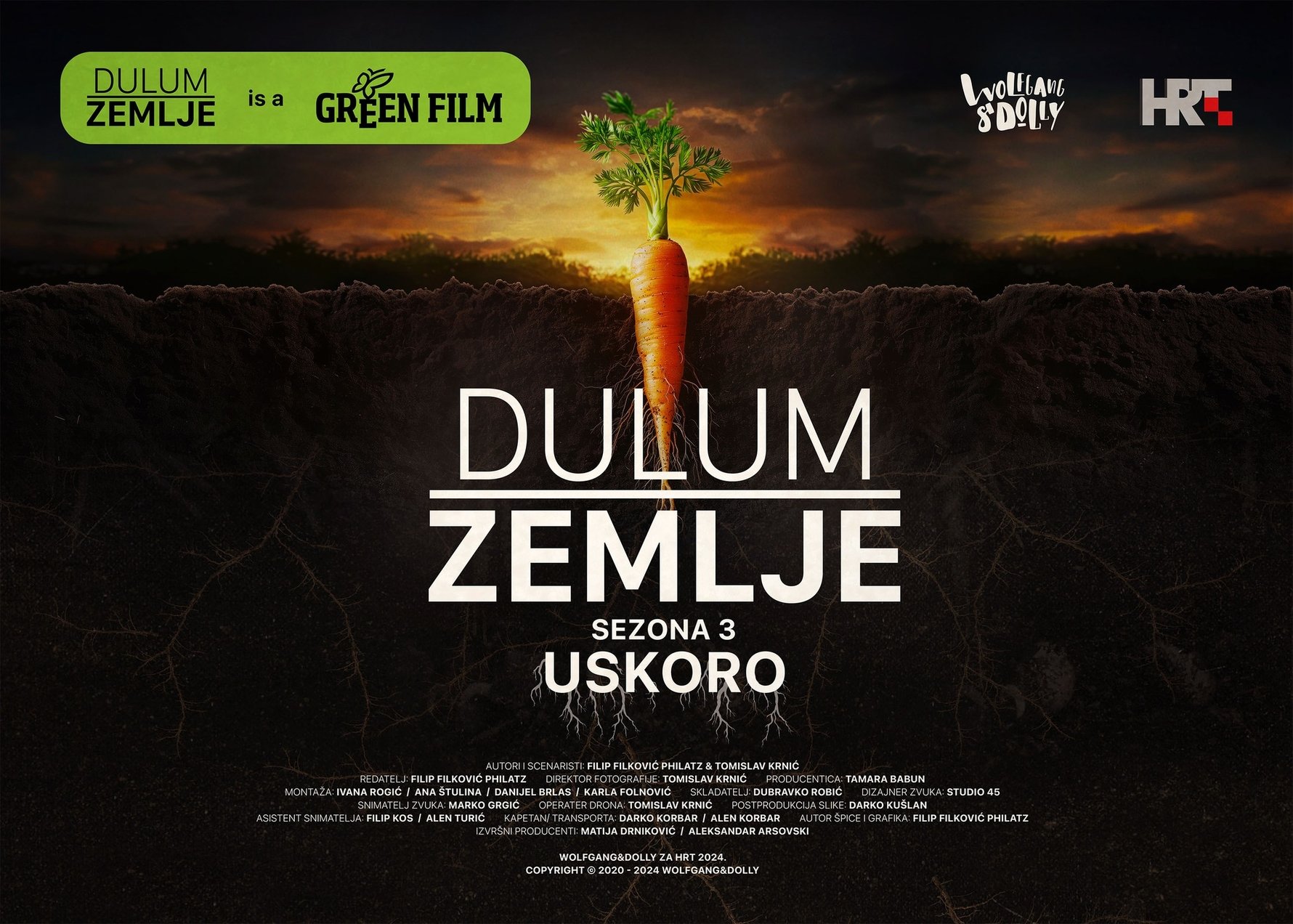Zagreb-born film, documentary and advertising director Filip Filković (known as Philatz) is one of the most interesting artistic voices in Croatia today. Aside from his popular video works, Filković has also spread his wings into documentaries, with works including “Dulum Zemlje” (Back to the land), “Lovac na bilje” (The Herb Hunter), “Zanat” (The Craft), and “Ideja uspona” (The Idea of Ascent) on his ever-growing resume. We had the pleasure of chatting to the visionary, and he had plenty to say.

Filip:
Primarily, I’m a director who loves searching for untold stories. I’m always drawn to the hidden details of everyday life that most people might not notice. Whether it’s something hidden on the street, a story from an old vineyard, or architecture that is slowly disappearing, I strive to showcase the beauty and value of those moments through my projects. More than anything, I love creating something that will make people pause, reflect, and look at the world around them with a slightly different perspective. Recently, I’ve started experimenting with artificial intelligence, creating videos and visuals that decode reality and offer insight into another dimension.
CIYP: Since we primarily focus on creating and publishing guides to Croatia, culture is a big part of our publications. The initial idea was to do a short interview with the founder of the cultural project "Mali Zagreb," which is actually based on the heritage of the city of Zagreb. Could you briefly tell us what Mali Zagreb is, and do you see the project continuing in the future?
Filip:
Mali Zagreb is a project that brings the history and identity of the city of Zagreb to life through miniature installations representing the façades of old Zagreb shops and trades. In this way, we invite passersby to stop, look around, and discover these small details that tell stories from the past. The project has grown year after year, and I plan to continue it in the future, adding new installations that will continue to delight the city's residents and visitors. I also plan a series of additional virtual activations, more on that soon.
CIYP: One of the things we are most interested in for our readers is the story about “Dulum zemlje.” Last year, Dulum zemlje was named the best agricultural show in the world (an award given by the International Federation of Agricultural Journalists, IFAJ). In addition, the series crew received the Marco Polo plaque last year, awarded by the Croatian branch of the World Association of Travel Journalists and Writers to domestic and foreign travel writers. It is also the first Croatian audiovisual production to receive the Green Film certificate, and we will soon be able to watch it on Croatian television, with the possibility of an English translation for a broader audience. Can you briefly explain what Green Film is? And how did the idea for the series "Dulum zemlje" come about, which also has a very interesting name (Dulum is a Turkish unit of area)?

Filip:
Green Film is an international certificate that recognizes audiovisual productions contributing to the green transition of the film industry. In the case of "Dulum zemlje," from the very beginning, we focused on sustainability, both in theme and in the approach to filming, which led us to receive this certificate. The idea behind the series is to explore the relationship between people and the land, agriculture, which is ultimately reflected in its name — Dulum is an old measure of land area. We decided to tackle this topic because it’s about the universal relationship between humans, nature, food, and life, while also exploring specific local stories that connect us to the rest of the world. The idea for the series came about because my co-author Tomislav Krnić and I traveled across Croatia and met many intelligent and interesting farmers creating something great. However, whenever we turned on the TV, we only saw negative stories about agriculture, so we decided to create a series about those people who never give up but keep moving forward, creating wonderful things.
CIYP: After so many episodes and series, can you say that you better understand today's generation's relationship with the land, and, generally speaking, people's relationship with food and creation on the land?
Filip:
Absolutely. Through filming series like "Dulum zemlje," "Lovac na bilje," "Ideja Uspona," and "Povratak Životinjama," I’ve noticed a significant return to authenticity and a natural way of life. Young people are increasingly turning to sustainable practices, local production, and creating (for example) food with their own hands. This interest isn’t just a trend, but a return to roots and awareness of how important it is to know where our food comes from. However, there is still a lot of room for education and raising awareness, which is one of the reasons "Dulum zemlje" plays such an important role.
CIYP: We know you're also working on a documentary project called "K67." It sounds like a cryptic code, but many don’t know it’s actually a “cryptic” design. What is K67, how important is it for us, and when can we expect to see the documentary?
Filip:
K67 is the name for modular kiosks designed in 1966 by Slovenian designer Saša Mächtig. These kiosks were a symbol of modernization in former Yugoslavia and found their place in urban landscapes across the Balkans, and even beyond. My documentary follows the journey of Saša and me through the countries of the former Yugoslavia, exploring the history of these kiosks and their impact on the people who lived and worked with them. The documentary is currently in production, and I expect the audience to enjoy it within the next two years.
CIYP: A few quick questions to wrap up, what motivates you?
Filip:
I’m motivated by the possibility of telling stories that change how people view the world around them. Every story carries its own emotion, history, and message, and I’m most inspired when I see that the message has touched the audience.
CIYP: You live in Zagreb; what do you love most about it?
Filip:
What I love most about Zagreb is its mix of historical and modern, and the sense of community. The city is full of hidden stories and corners, and every time I walk the streets, I discover something new that reminds me of how alive and inspiring it is.
CIYP: What is your ideal Sunday?
Filip:
An ideal Sunday for me starts when everyone else is still asleep, and the city is just waking up. A run or a walk somewhere where nature takes over – where it feels like the forest is embracing you. After that, a city brunch with friends. The afternoon is when everything pauses, then maybe a book, a film, music, or a video game. However, Sundays are often workdays for me, so this is just an ideal I sometimes allow myself during breaks from filming.
CIYP: Best hack or tip for Zagreb?
Filip:
If you really want to feel the spirit of Zagreb, step into an old passageway. There are many of them in the city center, and each hides a secret – old tiles, wooden staircases, the smell of the past. Listen to the sounds – creaking doors, footsteps on stone stairs, the hum of conversations echoing through courtyards. And don’t forget the cellars – often, remnants of old trades or someone’s abandoned memories are hidden there. These places reveal the Zagreb of the past and provide the most authentic feel of the city. This is also my hobby, wandering through such spaces, searching for something others don’t notice or take for granted.





Comments